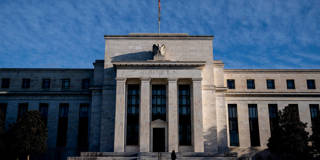Although US monetary policy was too aggressive for too long, the likely culprit behind the recent surge in consumer prices was an extraordinarily expansionary fiscal policy. After all, the Great Recession was also met with an aggressive monetary-policy response, but inflation barely budged for a decade.
CAMBRIDGE – When considering what caused the sharp increase in the US inflation rate from late 2020 to today, my initial instinct was to focus on aggressive monetary policy, following Milton Friedman’s famous dictum that, “inflation is always and everywhere a monetary phenomenon.” But while monetary policy is important, aggressive fiscal policy may have been more important this time.

CAMBRIDGE – When considering what caused the sharp increase in the US inflation rate from late 2020 to today, my initial instinct was to focus on aggressive monetary policy, following Milton Friedman’s famous dictum that, “inflation is always and everywhere a monetary phenomenon.” But while monetary policy is important, aggressive fiscal policy may have been more important this time.